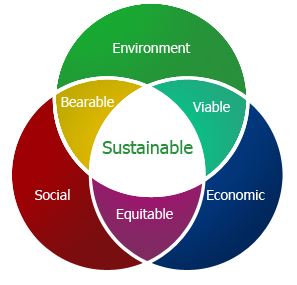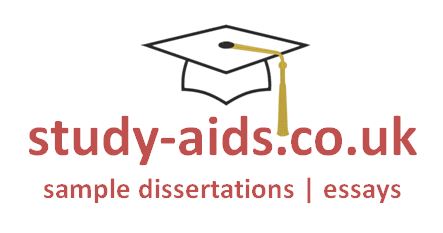Sustainability Development Theory and Practice: Critical Reflections Applied to Local Situations
Sustainable Development Theory – Some projects are considered as sustainable endeavors, such as hydroelectricity production using dams, which do not, in the application, fulfill the requirements to be considered sustainable. That is the case of the infamous Bela Monte project in Brazil. For more than 27 years groups have fought against the construction, motivated by numerous demonstrations, lawsuits, and opposition by groups; especially indigenous communities, environmental advocates, and other social organizations.
The original project consisted of 6 dams with a size of 1,225 m2. However, after a strong challenge experienced during the first encounter with the indigenous nations that existed in Xingu in 1989, the project was reduced to one dam with an area of 440 m2 which makes it the 4th largest dam in world.
The cost of this dam is estimated to be about 18 billion USD, double the original estimates done 26 years ago and 80 percent is financed by national funds. The government claims these type projects are fundamental in order to spur on the Economy (Laurie, 2014). Belo Monte is projected to operate at peak capacity for a few months throughout the year, and during the low water levels season, it would generate electricity as low as 1,000 MW (Rivers, 2010, p. 2).
Climate change, during different seasons, may worsen the situation since most climate models predict that the river flows in various parts of Amazon may fall by 30% in the few decades to come. Deforestation has greatly caused the delay of onset of the rainy season to about six days every decade.
The government has refused to conduct comprehensive social and environmental studies to determine the potential negative impacts (Laurie, 2014). The Brazilian Institute of Environment and Renewable Natural Resources (IBAMA) has been responsible for the respective studies, permits, and limitations (IBAMA, 2017).
However, Belo Monte has a record of over 786 irregularities in the licensing by the Institute of the Environment and Renewable Natural Resources of Brazil (Fearnside, 2016, p. 19). More than 20,000 people have been evacuated and relocated to nearby cities like Altamira. The construction was initiated in the year 2011 and since then, the city of Altamira has seen a high influx of migrants.
Sustainable Development Theory and Wildlife
To date, over 40,000 plant species, about 2,200 fishes, 1,294 species of birds, approximately 427 mammals, and 378 reptiles are found in the region (Albert & Reis, 2011; Silva & Cardoso, 2005). With the completion of Belo Monte, biodiversity in the extensive area around the central Amazon would be affected.
The rich flooded forests of the middle Xingu and Big Bend would be diversely affected and would no longer receive seasonal floodwaters. Other than affecting migratory fish species and the causing endemic, construction of this dam would seriously affect land fauna, aquatic life, not forgetting the endangered species such as the black-bearded Saki monkey and white-cheeked spider monkey in the forests through which the dam will run.
Furthermore, the threatened species of turtle found downstream would risk losing their breeding grounds (Rivers, 2010, p. 4). Dams in Brazil emit high amounts of methane (CH4). On the same note, dams in the humid tropic areas emit higher amounts of CH4 compared to those in different climate zones.
The reason as to why dams produce methane is because the water stratifies into layers in the reservoir, forming a warm layer (epilimnion) at the upper water layer that is in contact with the air in about 2-10 meters that contain oxygen. On the other hand, a cold layer (hypolimnion) forms in the deeper water layers where the oxygen gets quickly exhausted decomposing the organic matter which leads to the production of CH4 instead of carbon dioxide (CO2) (Fearnside, 2016, p. 17).
In conclusion, Belo Monte project has failed sustainably when gauged within the economic, social and environmental contexts. First, on the economic basis, the project is not profitable; the government has invested 18 billion USD for a project that is scheduled to only work a quarter of the year producing as low as 1,000MW during low-water levels season.
Further, socially, the project will not be providing an economic incentive or jobs to the communities whose economies were destroyed to build the dam. Due to the wide coverage of the project, human shelter and income earning activities will be affected causing a significant economic impact. Next, environmentally, the dam is an unmitigated disaster. Greenhouse gas emissions will increase, fauna and flora will be destroyed and other more potentially harmful impacts are unknown. Besides, a large piece of land will be uncovered to establish the dam site by uprooting trees and soil covers which affect the environment.
Works Cited
Albert, James S., and Roberto E. Reis. Historical Biogeography of Geotropically Freshwater Fishes. The University of California. California: press, 2011.
Fearnside, Philip M. Environmental and Social Impacts of Hydroelectric Dams in Brazilian Amazonia: Implications for the Aluminum Industry. Manaus, Brazil: Crossmark, 2016.
IISD, International institute for sustainable development. “International Institution for Sustainable Development” 1987.
Rivers, International. “International Rivers” March 2010. Belo Monte.
Silva, Da, and Jose Maria Cardoso. “The Fate of the Amazonian Areas of Endemism“. Conservation Biology.” 2005.
Relevant Sustainable Development Theory Posts
Barriers to Construction SME Contractors in Implementing Sustainable Construction
Can Sustainability Issues Impact the Valuation of UK Commercial Property?
A Study Into The Uptake Of Sustainability Practice Within Residential Property
Life Cycle Costing Sustainable Construction
Did you find any useful knowledge relating to concept of sustainable development theory and practice in this post? What are the key facts that grabbed your attention? Let us know in the comments. Thank you.


